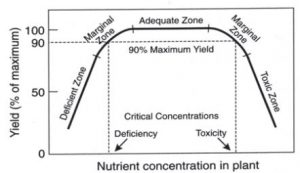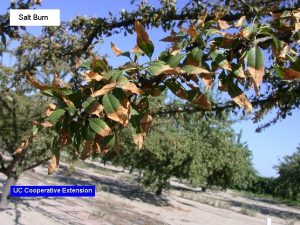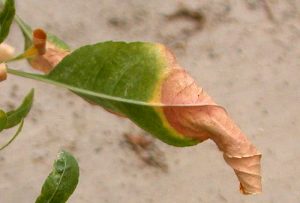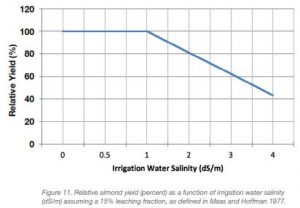We farmers look for ways to maintain productivity. Aerial study by camera drone, soil moisture sensors and weather from satellites are tools for data focused farming. In a recent post we discussed irrigation water testing. Last month almond tree leaf samples were collected and the leaf tissue analyzed and our West Block and East Block results are in. For almond, leaf analysis is more useful in diagnosing mineral deficiencies and toxicities than is soil analysis. This is because soil analysis does not indicate whether plants are able to uptake the nutrients. The leaf tells us about [nitrogen] nutrient levels which is crucial for plant health and yield. (‘you are what you eat‘)
D & D Agricultural Laboratory performs the service for us. It would be interesting to be on site to witness the leaf collection method. For example, do they sample the 4th tree in every 4th row? Should you look at strong trees or weak ones? From which part of the tree to they take the leaf and why? answer
In the laboratory, they wash sample leaves in a weak detergent mixture, rinse them in distilled water and dry them at 65 degrees C. The leaves are then ground and a subsample analyzed to determine the content of the requested elements. The macronutrients N, P, K, Ca, Mg and S are usually expressed as a percentage and the micronutrients in part per million (ppm). These results are judged against known standards. For each nutrient, there is a correlation between its concentration in the plant and the yield of the plant.
The curve below describes this correlation. This curve is referred to as a “yield response curve”. [ reference , reference2 ]

Interpretation is provided graphically and comparatively over previous year efforts by our lab. Tissue testing does little to explain the reason for the nutritional disorder. It is only an alert and can help to identify or explain visual cues.
So, how are we doing? Sampling is best done in July but in this early peek; things look good. Someday technology may allow growers to identify what an orchard needs and provide remedy on a tree by tree basis. That would truly be Big Data.

 … not to be confused with
… not to be confused with 
